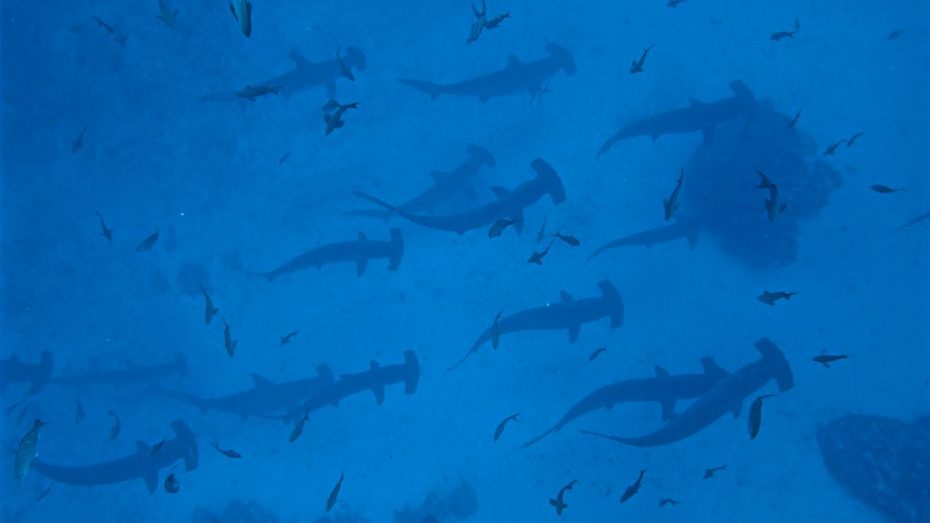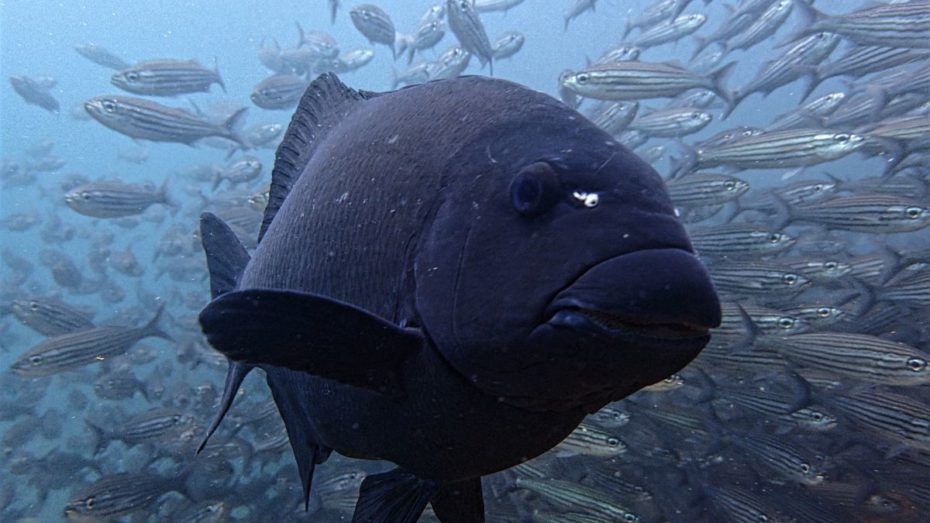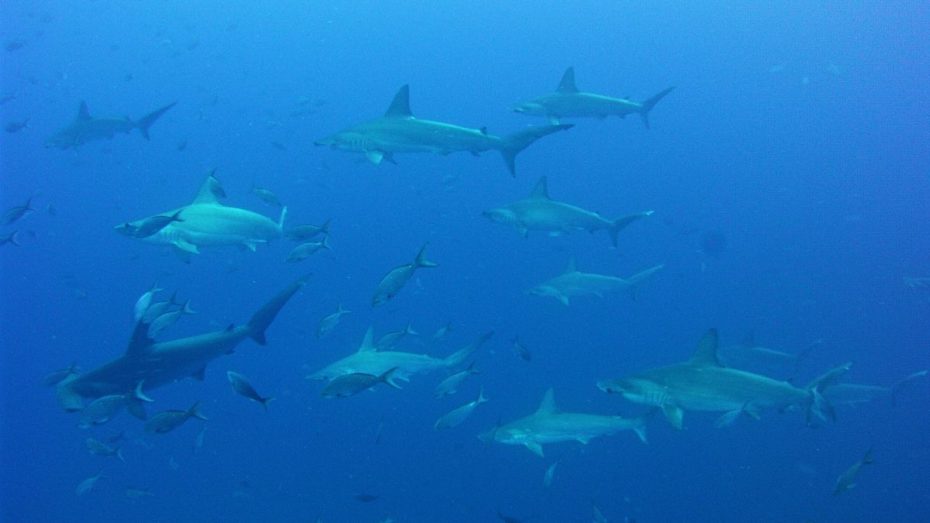Galapagos Islands Tour Packages
Daily Galapagos Land-Based Tours and Diving Tours
The Galapagos Islands, renowned for their dive sites, particularly around Wolf and Darwin, are a diver’s paradise. These northern islands offer an abundance of marine life, attracting divers worldwide.
However, accessing these sites requires over 100 logged dives and a considerable investment in an 8-day trip.
A Hidden Gem: Central Islands Dive Sites
Contrary to popular belief, Wolf and Darwin aren’t the only spots for a memorable dive in the Galapagos. The central islands boast equally stunning dive locations, reachable within 45 minutes to 2 hours.
Imagine a day of adventure where a high-speed boat takes you to these sites. You can enjoy two dives, a delightful lunch, and snorkeling, and still return to town early enough to explore local beaches and dine with your dive companions and the locals in the evening. (Check out our Galapagos Diving Day Trips to learn more.)
Insider’s Guide to Galapagos Diving
Having dived in the Galapagos for a decade, I’m most frequently asked, “What’s the best dive site in Galapagos?” The answer isn’t straightforward. It varies depending on the season, your diving experience, and your interests. While I do have a personal favorite, I’ll save that for later. For now, let’s explore the diverse range of dive sites and the optimal times to visit them.
Dive Site Characteristics: A Unique Terrain
The Galapagos Islands’ volcanic origin, including active volcanoes in the west, shapes its unique dive sites. Expect rocky terrains with occasional coral patches and sandy channels resembling maritime highways. If your dive begins with a sandy view, don’t be discouraged; these channels often lead to more intriguing underwater landscapes.

Temperature in the Galapagos
The Galapagos Islands offer fantastic diving opportunities throughout the year. Your choice largely depends on your preference for water temperature.
Warm Season: December to May
From December to May, the waters are warmed by the Panama Current, resulting in temperatures between 22°C to 27°C. This period typically offers better visibility due to the Humboldt current weakening, leading to clearer waters. These months are characterized by hot, humid days with clear blue skies.
From February to April, temperatures range from 30-35°C, both day and night, with humidity levels hovering around 80%-85%. Air conditioning is highly recommended for these months. Rain is common from January to March, often in the early mornings or overnight, contributing to the day’s humidity.
This warmer season increases your chances of encountering large schools of hammerhead sharks, whitetip reef sharks, numerous marine turtles, and rays.
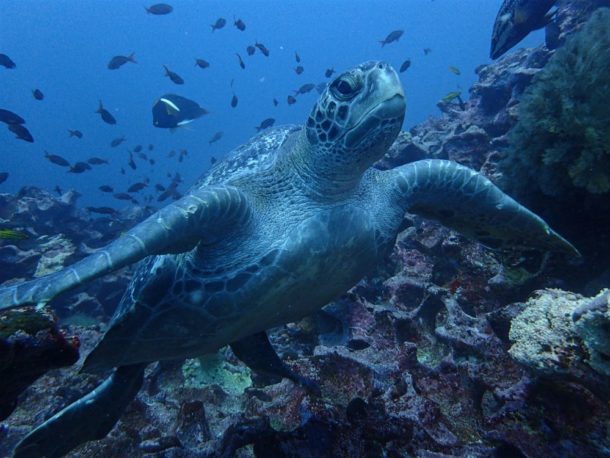
Galapagos Islands During the Cooler Season
The cooler months in the Galapagos run from June through November. During this time, average temperatures range between 18°C and 24°C. The skies become cloudier as the Humboldt current strengthens, bringing cooler water and essential nutrients for marine and bird life.
Water temperatures average 18°C to 20°C, but be prepared for days that can dip to 16°C. If you’re sensitive to the cold, it’s wise to pack extra layers and a hood. Divers often prefer dry suits over rental wetsuits in these conditions for added warmth.
Essentials for Island Exploration
A lightweight rain jacket or poncho is recommended for island walks during these months. Misty rains, locally known as ‘garua,’ are common, particularly in the highlands where the tortoises reside.
Despite the chillier waters, marine life remains vibrant. This period is notable for the arrival of whale sharks and sunfish (mola mola), offering unique underwater experiences.
(If you also want to encounter the Islands’ land animals, explore our Daily Land Tours in the Galapagos Islands.)
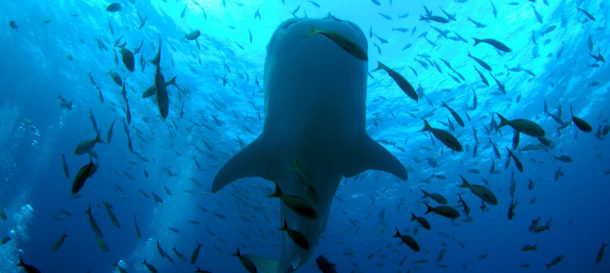
Galapagos Dive Sites
If we talk first about the daily tour dive sites, hands-down, the most popular site here is Gordon Rocks – reached with a tour from the island of Santa Cruz.
Why? You might ask. Well, the answer is simple: hammerhead sharks!
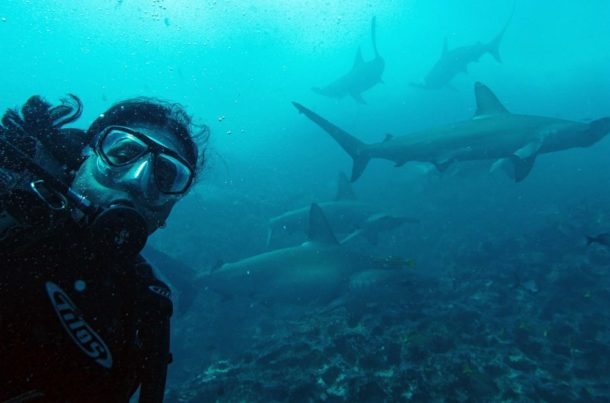
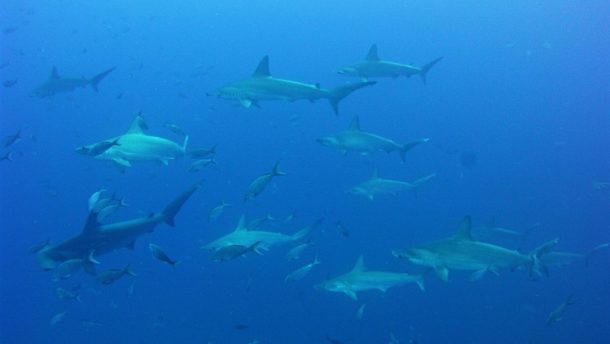
Gordon Rocks: A Premier Diving Destination
Gordon Rocks offers an unparalleled opportunity to dive with an array of extraordinary marine creatures. Shark sightings here vary widely; sometimes you might spot just one or two, but on other occasions, you could encounter as many as 100.
On average, divers at Gordon Rocks witness 10-30 sharks per dive. The excitement of seeing these sharks is enhanced by the site’s unique geography—an extinct volcanic crater through which the sharks swim against the current. This natural formation often brings the sharks close to divers, making for an exhilarating experience.
Diverse Marine Life and Ideal Conditions
On a good day at Gordon Rocks, divers can also see whitetip and blacktip reef sharks, numerous green sea turtles, eagle rays, golden rays, and, during the cooler months, the elusive mola mola. If you have more than 25 dives and recent diving experience, Gordon Rocks is a must-visit site in the Galapagos, often warranting 2 or 3 days of exploration. However, if you’re less experienced, don’t worry—there are plenty of other fantastic diving sites. What to know more about this fantastic site? Read our blog on Diving Gordon Rocks.
North Seymour Canal and Mosquera: The Next Best Sites
Another popular diving spot is the North Seymour Canal or Point, often combined with Mosquera. Most dive centers offer a day that includes one dive at Seymour and one at Mosquera. What makes Seymour and Mosquera so appealing? The answer is hammerhead sharks. While sightings vary, they can sometimes surpass those at Gordon Rocks, with an average of 10-20 sharks per trip.
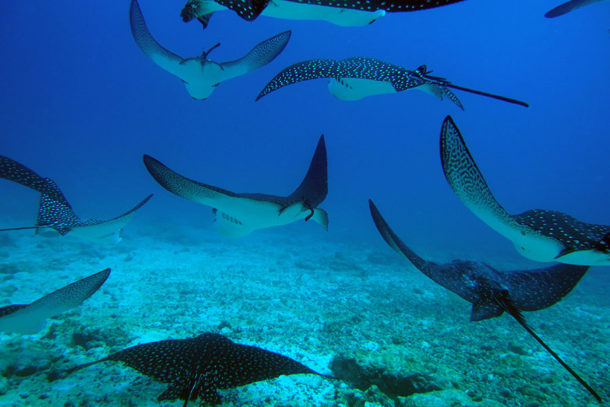
Seymour & Mosquera are also great sites to see schools of eagle rays, golden rays, mobula rays (also known as the giant devil ray), and sometimes the mantas. Galapagos gardon eels are a favorite sighting of mine, thousands can be seen waving in the currents collecting their dinner.
And of course don’t forget the whitetip reef sharks, blacktip sharks, and sometimes the playful sea lions.
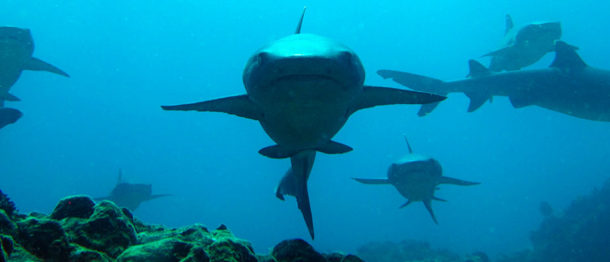
Seymour & Mosquera
Seymour and Mosquera are exceptional for observing schools of eagle, golden, and mobula rays, and occasionally mantas. A highlight at these sites is the Galapagos garden eels, often seen in thousands, gracefully waving in the currents. These sites are also frequented by whitetip and blacktip reef sharks, and playful sea lions.
Relaxed Diving Experience
These sites present a more relaxed diving experience with less current than Gordon Rocks, making them suitable for divers of all levels to enjoy the diverse marine life of the Galapagos.
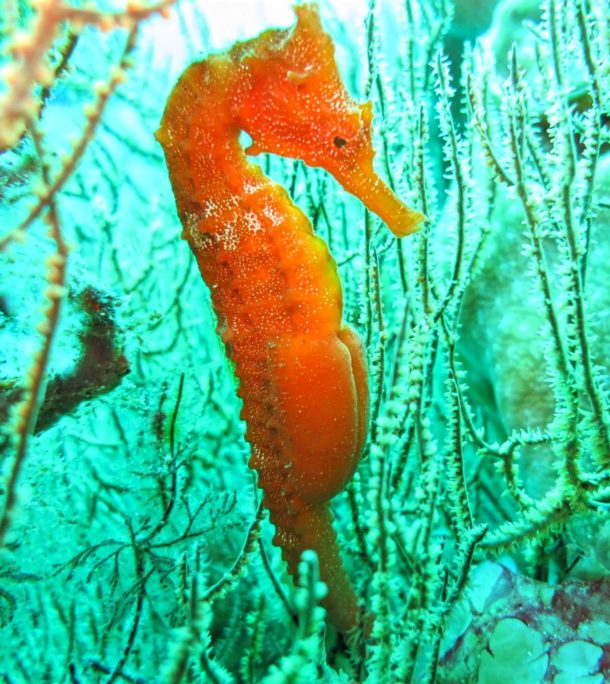
Beagle Rocks and Daphne Minor: Unique Underwater Landscapes
North of Santa Cruz, Beagle Rocks and Daphne Minor are combined for a one-day trip, offering a distinct experience. While Beagle boasts a stunning wall of black coral (appearing green) and is a favored spot for manta rays, Daphne Minor, with its smaller size, is ideal for wall dives attracting mantas, sea lions, reef sharks, hammerheads, and various rays. Certain times of the year also see schools of Black striped Salema fish, creating a mesmerizing spectacle.
Other Notable Sites: Cousins Rock and Bartolome
Cousins Rock and Bartolome, located north of Santa Cruz, are not part of our regular itinerary but are worth mentioning. Cousins Rock is particularly known for manta ray sightings, alongside sea lions, reef sharks, turtles, and hammerhead sharks. These sites also offer views of Bartolome Island’s Pinnacle Rock and its surroundings.

Floreana: A Personal Favorite
Heading south of Santa Cruz, Floreana emerges as my personal favorite. This site encapsulates the essence of Galapagos diving with a diverse array of marine life, including the endearing sea lions that add a special charm to the experience.

Floreana
Dives around Floreana, particularly at Punta Cormorant and Islote Enderby, are known for being relaxed yet vibrant. These sites feature black coral and a rich diversity of marine life, including large schools of colorful fish, rays, turtles, and sharks. It’s common to encounter hammerheads on the way, and occasionally, even whale sharks.
Santa Fe
East of Santa Cruz lies Isla Santa Fe, offering varied diving experiences. Despite its reputation as a simple dive site, the areas we explore are far from ordinary. The cave dive site, with its shallow arch teeming with fish and playful sea lions, is a highlight.
Depending on a diver’s experience, another spot with stronger currents might be chosen, often frequented by juvenile Galapagos sharks and hammerhead schools. Santa Fe can provide either a tranquil day with sea lions or an exhilarating shark encounter.

San Cristobal: A Blend of Diving and Land Tours
Isla San Cristobal combines diving with land-based tours, offering two dives plus a beach walk or a visit to a visitor site with a naturalist guide. These trips usually cater to both divers and snorkelers.
Isabella Island: Marine Exploration and Island Adventures
Isabella Island offers an enchanting fusion of marine exploration and terrestrial adventures, seamlessly blending underwater experiences with captivating land-based tours. Dive enthusiasts and nature lovers alike are treated to a diverse array of activities, typically including two exhilarating dives paired with either a leisurely beach stroll or an immersive exploration of the island’s remarkable attractions guided by a knowledgeable naturalist. If this appeals to you, consider our Isabella Island Day Tours.
Kicker Rock: A Must-See Dive Site
Kicker Rock (Leon Dormido) is a premier diving destination near San Cristobal. It’s as spectacular underwater as it is above, offering sightings of hammerhead, blacktip, and whitetip reef sharks, along with other marine life like black striped Samela fish, turtles, and eagle rays. The dive is often paired with a beach visit to places like Cerro Brujo, El Manglecito, or Puerto Grande.

Punta Pitt: Diving and Birdwatching
At Punta Pitt, located at the northeastern point of San Cristobal, diving is combined with a walk through red-footed boobies’ nesting sites, offering a unique blend of marine and avian experiences. The dive sites here showcase smaller marine life, multicolored fish, reef sharks, sea lions, turtles, and the possibility of encountering hammerheads.
Espanola
Off the southern coast of San Cristobal lies Espanola Island, known for its waved Albatross nesting sites, the largest birds in the archipelago. This trip usually involves a single dive at Gardner Bay, surrounded by a variety of marine life, including playful sea lions, colorful reef fish, lazy turtles, and reef sharks.
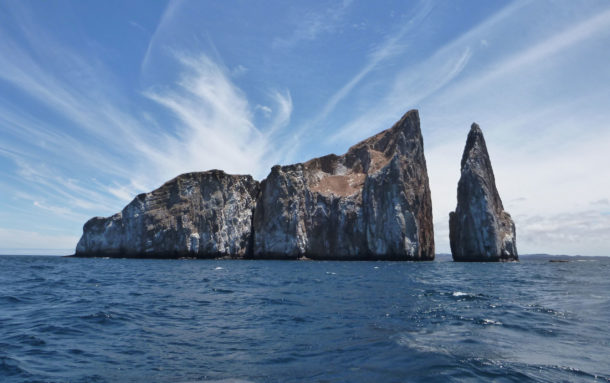
Discovering Puerto Baquarizo: Wreck and Lagoon Dives
Back in the Bay at Puerto Baquarizo, divers can explore the Caragua Wreck combined with a visit to Las Tijeretas. The Caragua Wreck, a WW1 German ship, offers an accessible dive at around 13 meters depth, suitable even for non-advanced divers. The 100-meter-long wreck, with explorable areas like the boiler room and propellers, is enveloped in a vibrant reef, home to colorful fish, turtles, reef sharks, and moray eels.
Las Tijeretas, a natural lagoon on the coast of San Cristobal, is known for its crystal-clear waters and shallow rocks. It’s a popular spot for sea lions and green sea turtles, making for a pleasant and tranquil diving experience.
Tailored Diving Experiences
Whether an experienced diver or a beginner, Land-Based Diving Packages in the Galapagos make for an unforgettable experience. Our packages are designed with individual skill levels and preferences in mind, ensuring the best possible experience and marine life sightings.
Optimal Diving Seasons in the Galapagos
The Galapagos Islands are a year-round diving destination, but the ideal time depends on your diving interests:
- Warm Season (December to May): Characterized by warmer water temperatures (70-80°F or 21-27°C), calmer seas, and better visibility. This period is perfect for those keen on seeing a diverse array of marine life, including manta rays and hammerhead sharks.
- Cool Season (June to November): Cooler water temperatures (60-75°F or 16-24°C) bring nutrient-rich currents, attracting larger animals like whale sharks and various whale species. Recommended for experienced divers looking to encounter these majestic creatures.
Remember, visibility and marine life can vary, so it’s advisable to consult with local dive operators for the latest conditions.
Galapagos Diving Liveaboard Options
For those interested in liveaboard diving, check out our page on Galapagos Diving Liveaboard Options. Feel free to contact us with any questions.
Adhering to National Park Rules
When visiting these sites, please respect the following National Park rules:
- Keep a 2-meter distance from wildlife, including when using cameras.
- Do not touch or feed the fauna.
- Avoid removing elements of the ecosystem.
- No smoking, drinking, or campfires within the national park.
- Stay on marked trails and camp only in designated areas with prior authorization.
- Use only authorized tour and fishing boats.
- Professional photographers and drone operators need special permission; no flash photography.
- Do not introduce external elements into the ecosystem.
- Refrain from using motorized watercraft, submarines, and air tourism.








